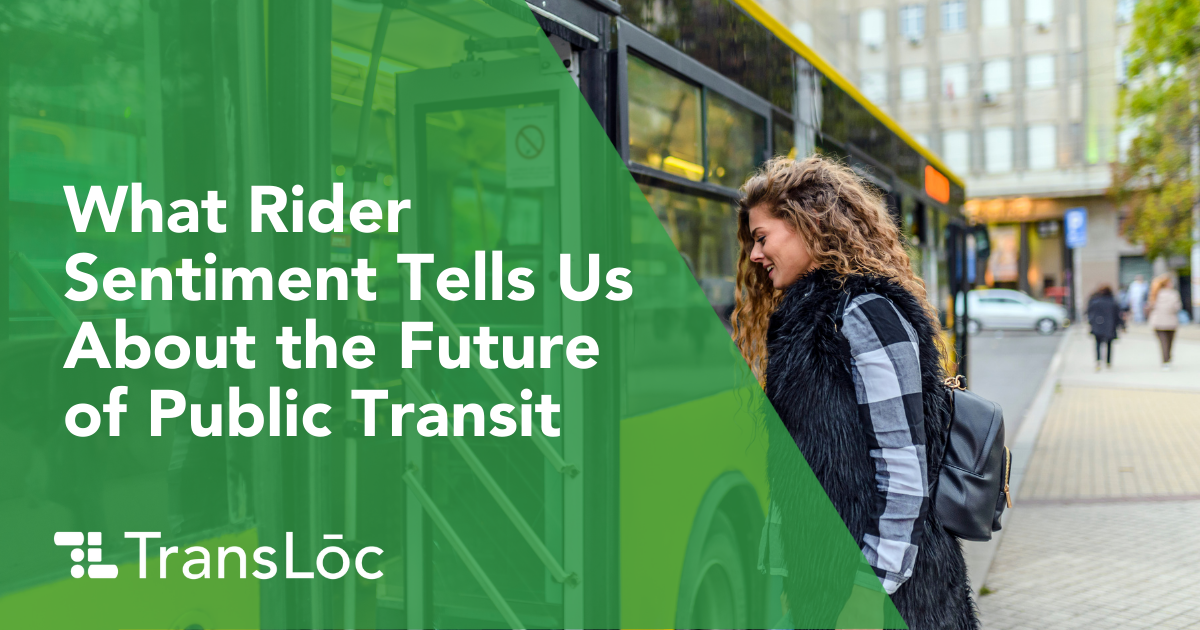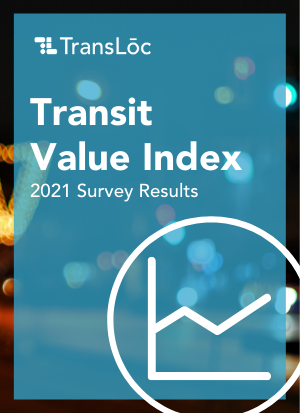
While the onset of COVID-19 brought life to a standstill, many aspects of life continue to experience change as communities begin moving again.
Last month, TransLoc polled 1,200 American transit riders about their pre-pandemic and current transit usage. The results offer clarity on the future of transit services that agencies should be moving towards.

Prior to the pandemic, it was common to find a vast majority of commuters driving alone in their own personal automobile or carpooling; at this time, public transit accounted for 4.9% of all trips taken in America.
As people begin to reconnect with their surroundings, 14% of riders we polled indicated they will not use public transportation as frequently as they did before the pandemic; a majority of them preferring to drive alone in single-occupancy vehicles or carpooling.
And why is that? Is it because of dissatisfaction with the service? An attempt to avoid proximity to potentially ill people? Can we point to the growth of telecommuting? Or is it another reason?
While it’s likely a mixture of all of the above, the riders surveyed revealed three main dissatisfactions with transit: cleanliness, exposure to potentially-ill passengers, and safety risks. Couple that with the findings that 73% of riders would like like to see technological improvements in conveying accurate transportation information to them, and it becomes apparent that the fear of one’s safety — whether that be physical harm or illness — has brought public transit to a precipice, requiring agencies to enact significant and swift change in their services.
We see a clear picture of the huge role that planning and design services and technology have in creating a better transportation system when:
- 65% of riders live within walking distance of a transit stop.
- Nearly 75% of individuals want to see on-demand as a first-mile/last-mile solution.
- And even more people would be enticed to ride public transit if onboard Wi-Fi and cell coverage improved, or if employers reimbursed transit expenses.
Planning, design, and implementation of a multi-modal technological solution provide the comfort and know-how to ensure that current and future riders can easily navigate and connect to their communities.
Looking forward, it is interesting that many of today’s transit riders want cleaner, more eco-friendly transportation solutions, and have expressed a unique affinity for electric vehicles. Even more interesting is that consumer interest and comfort with autonomous vehicles (AVs) very closely mirrors 2016 findings of a Pew Research and an ORC International survey on consumer’s interest and comfort in electric vehicles.
Which raises the question: how much longer into the future do we travel before riders start believing in the future-shaping power of AVs?
It’s one of many questions facing the future of mobility; questions that TransLoc is eager to answer by partnering with transit agencies across the country to revolutionize mobility for all.
Read the 2021 TransLoc Value Index today.